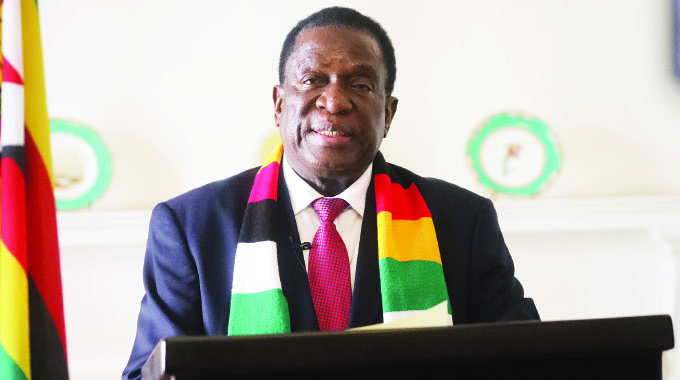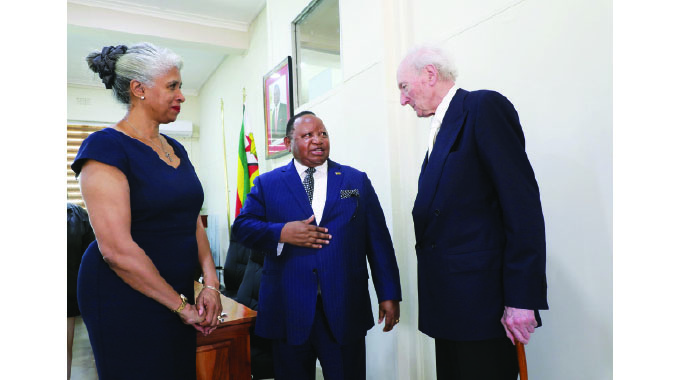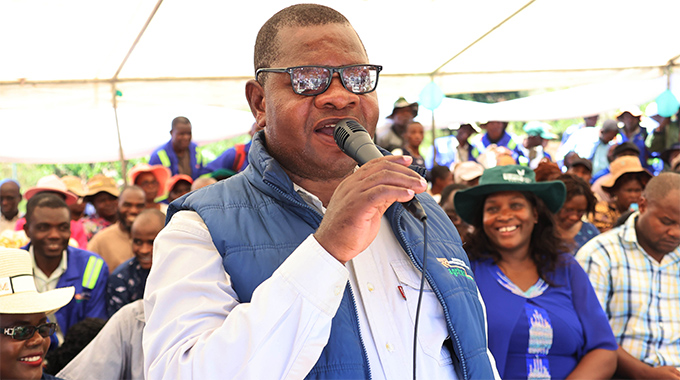Measures taken to ease power shortage

Zvamaida Murwira Senior Reporter
Ramping up generation at thermal power stations and increasing power imports are among the measures pushed by Government after Kariba South Power Station, the main power source, had to halve generation by 300MW owing to low water levels in Lake Kariba.
Speaking after yesterday’s Cabinet meeting, Secretary for Energy and Power Development Engineer Gloria Magombo said the authorities were working tirelessly to contain the gap created by the low water levels at Kariba.
Zimbabwe is presently facing acute power shortages which have seen consumers going for long hours, outside the normal load-shedding periods, without electricity.
The situation, caused initially by frequent breakdowns at Hwange Thermal Station, has been compounded by the water shortages in Lake Kariba and the resulting cut back at Kariba South which provides the bulk of Zimbabwe’s electricity supplies.
The Zambezi River Authority which runs the Kariba Dam, wrote to the Zimbabwe Power Company last week directing it to stop generating electricity until at least January, when water levels are expected to have picked up. This was modified during last week to allow Zesa to generate 300MW, a major help but still leaving Zimbabwe short and getting half what it was looking at from Kariba.
“Various measures were reported to Cabinet which have been put in place to ensure that there is continued power generation and supply demand gap which has increased due to the loss of the 300MW.
“One of the first strategies is to ensure that the current units which are generating in Hwange, continue to be maintained and they are optimised to ensure that they produce an average of 400MW to ensure energy supply security,” said Eng Magombo.
“Over and above in the long term, over US$400 million was secured to improve capacity in Bulawayo and Hwange. At Hwange power station, the life extension project has started with Unit 5 which has been out due challenges with its turbines earlier this year.
“We have also been ramping up production for the small thermals in Bulawayo, Harare and Munyati to push them to 45MW. Coal supplies are currently being expedited and there is a train with over 30 wagons to power stations to ensure that there is more production.”
She said the new 300MW Hwange Unit 7 was expected to be synchronised to the system by end of this month, thus further alleviating the situation and making up the gap from the Kariba cutback.
“Unit 8 is also being developed in parallel and we expect that it will be commissioned during the first quarter of 2023,” she said.
An additional coal plant at Hwange going through maintenance should be up soon, thus adding an additional 15 MW to the national grid as more fuel is supplied.
Eng Magombo said there were a number of mini hydro power station run by independent power producers that had been running below capacity but were set to increase generation owing to increased availability of water due to the recent rains. While it takes some months from the start of the rains over Southern Africa for runoff from the upper Zambezi basin, where most of the river water comes from, to reach Kariba, the small hydros are on small rivers that start flowing more soon after the first falls.
“As the rains are increasing they should be running to maximum capacity in the next two weeks and should add 15MW to the grid,” she said.
There were also separate solar projects at Blanket Mine, Caledonia, Gwanda and another in Guruve.
Eng Magombo said additional imports were also critical in improving power supply to add on what Zesa was getting from Eskom, South Africa, EDM and HCB in Mozambique and from Zambia.
“We have an agreement to increase further. While we remain in this constrained environment, the utility has been advised to increase the net metering. We have a number of projects which have been implemented by customers which need to be connected so that they are able to give excess to the grid,” said Eng Magombo.
Net metering allows Zesa customers with their own power generation, usually solar, to both sell and buy power. When the customer has a surplus, such as at midday, they can sell to Zesa and when the sub goes down and they need inflows, they can buy.
Whowever has sold the least to the other during a month, Zesa or the customer, pays the other the balance.
In the medium and long term, Government intends to bring in competitive procurement of 500MW of solar whose feasibility study has since been completed and announcement will be made during the first quarter next year, said Eng Magombo.
Several other agreements had been signed with independent power producers such as Evergreen and Skypower Global for 500MW to be implemented in phases while Zesa continues to use the rural electricity fund to extend the national grid.
Responding to queries by independent power producers on electricity tariffs, Eng Magombo said the tariffs the independents were paid were approved through a methodology approved by the Zimbabwe Energy Regulating Authority and were not related to what Zesa was charging its customers when that extra power was put into the pool from all sources.
“Each project has its bankability study and it comes up with tariffs which are then submitted for approval and negotiated by the offtaker either ZETDC or a large user who wants to buy directly from the IPP.
“The Government through the regulator has been supporting the tariffs for the main offtaker, ZETDC, because if ZETDC is below what the IPP can sell then the issue of them being paid becomes an issue,” she said.
She said IPPs and the Reserve Bank of Zimbabwe had agreed on modalities to convert payments to the IPPs into foreign currency to allow them to repay their loans.
Eng Magombo called for responsible use of electricity both at domestic and industrial level to save power.







Comments